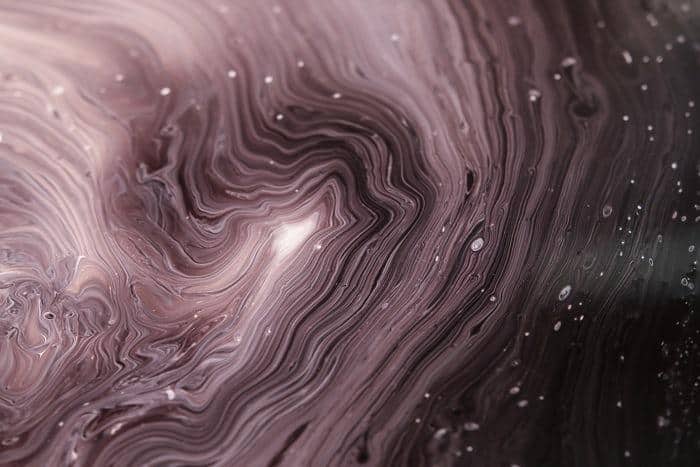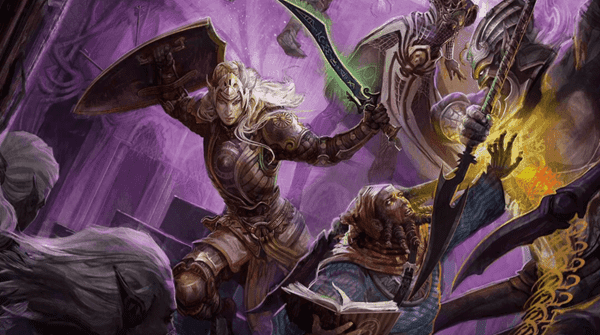Having done almost over a hundred D&D campaigns in my life, I still ask myself questions about this game every single time I play. For example, one of my recent shower thoughts was: How can I use Magic Stone 5e in the best way?
Magic Stone 5e is best used at the beginning of a campaign to create three magical pebbles during your bonus action that give you, or another player, an extra ranged attack if you throw the pebbles or hurl them to a target with a sling.
For Druids, Warlocks, and Artificers, using this transmutation cantrip is also a great way to make the most of your bonus action. This magical attack helps your character maximize its action economy every turn you take.
If you want to see what other DnD guides I have written, here is a practical overview.
What is Magic Stone
Magic Stone is a cantrip that falls under the magical school of Transmutation. There are two sources for it:
- The first source is Xanathar’s guide to Everything. This expansion is one of the more popular D&D books.
- The second book where we can find more on the cantrip is the Elemental Evil Player’s Companion.
Transmutation spells focus on transforming an item into either something else or giving it magical properties. In this case, we turn one to three regular pebbles into magical stones with magic. This enchantment allows them to be thrown further and do some severe damage!
While this isn’t the strongest cantrip, you pick. It does have some potential to do some severe damage, or at least surprise your Dungeon Master in a fun way. A magical attack that can hit your enemies from a long way out can do just enough to turn the tide of battle and give you the upper hand.
Listed below, you can find a helpful table with some extra info on the spell.
Magic Stone
| Type | Cantrip |
| School | Transmutation |
| Casting time | 1 bonus action |
| Range | Touch |
| Components | Verbal (V) and Somatic (S) |
| Duration | 1 minute |
For beginners, I have a great how-to-use it and how it works write-up in the next sections.

How to use Magic Stone
Magic Stone is an easy cantrip that is very decent in the first few levels of your player character’s journey. It imbues one to three pebbles you touch with magic. You can use these magic imbued pebbles to make a ranged spell attack by either throwing them or using a sling to hurl them towards a target. When thrown, the range is 60 feet.
- When using the cantrip, you must touch pebbles in your bonus actions! The throwing itself of your magically imbued pebbles is not part of this bonus action.
If you want to throw your stones right away and make sure you do not run out of your 1 minute of duration, you need to play it smart.
So, don’t forget, you need to touch the pebbles to imbue them, and this counts as your bonus action. The actual throwing or hurling of the pebbles with a sling will take a regular action.

How does Magic Stone work?
So to cast the Magic Stone spell, you will need to do a couple of things to cast the cantrip and use the stones. These actions are what you need to do:
- Touch the pebbles you want to imbue during your bonus action
- Say the spell out loud (Verbal component) and make the magical movements (Somatic component)
- The pebbles become magical stones for up to a minute.
- These stones can be thrown up to 60 feet during your regular action
- Throwing the pebbles and hitting a target deals bludgeoning damage of 1d6 + the spellcasting ability modifier.
No materials needed
Interestingly enough, the spell does not mention material components, meaning you do not need any to cast it. So you can do this spell without having actual pebbles or stones nearby. So have fun arguing with your DM or Players about that!
Long range
A minute is not a very long time in D&D, so you will have to hurry up if you want to throw the stones while they still have a damage modifier.
If you do not throw them within this pretty narrow timeframe, you will be throwing regular pebbles, which do not have a tonne of potential to damage, as you surely know.
Let’s focus on the actual utility of Magic Stone in 5e. The description of the cantrip mentions two scenarios.
- The first scenario is the most straightforward. You simply throw the stones at your target. That gives the pebbles a 1d6 plus the spellcasters modifier. This modifier increases your throwing range, too; you can throw the magically imbued stones up to 60 feet far.
- The second scenario is when you use a sling to hit your targets. When you shoot or hurl a magical stone with a sling in 5e, the damage is also 1d6. In my Homebrew, I make the damage go to 1d10 plus the spell casters modifier. Read below why and how I do this. The range of the pebble is a minimum of 30 feet and at most 160 feet. Why? Let me explain.

How to calculate the damage and range of a Magic Stone shot with a sling
Just a heads up! This chapter is for a HomeBrew to make the cantrip scale beyond level 4. These statements are not in the official rules, but something I do so the cantrip isn’t worthless by the midgame.
So only have your players shoot the stones when they are level 5 or up, or have them do a quest for a ‘magical’ sling.
How I calculate the damage of a Magic Stone shot with a sling:
- We take the magic-imbued stone bludgeoning damage after casting the spell. This damage output is a 1d6 or a three on average.
- We look at the base damage for a regular sling in DnD. That is 1d4 or an average of 2. Since throwing a regular pebble does no damage.
- I assume the bludgeoning damage of a pebble and a sling is compounded. That gives us a 1d10 or an average of 5 per hit.
This is how I determine the range of a magical stone shot with a sling:
When you throw a regular object, you can at most hit a target 20 feet far. If you are using a throwing weapon, you can shoot these pebbles up to 60 feet.
I will assume the magic gives the pebbles a boost of 40 feet. Imagine a little magical rocket strapped to it in midair, giving it an extra lift. Well, since the range of a sling is 120 feet and the boost is 40 feet, I assume the range of a Magic Stone shot with a sling is 160 feet.
If you have another idea or opinion on calculating the damage and range of a pebble enchanted with this cantrip, definitely let me know, I would love to hear it!

Who can use Magic Stone, and when is the best time
Classes
Three classes can use the Magic Stone cantrip. But there are a couple of other ways to use this cantrip. These are the three classes that can use the cantrip:
- Druid
- Warlock
- Artificer
Don’t forget that the imbued pebbles can be used by anyone you allow them to. The class of the player or monster that throws the actual pebbles during their turn does not influence being able to do that.
Encounter time: The best uses for Magic Stone
Here are a couple of excellent ideas, if I may say so myself, for Dungeon Masters to give your players the chance to use the Magic Stone cantrip with these extraordinary creatures and monster encounters.
| Encounters/Scenarios | Description |
|---|---|
| Fighting Rust Monsters | Rust Monsters erode ferrous metal upon contact, rendering weapons and armor useless. Magic Stone can provide ranged attacks for characters without long-range options. |
| Arming Allies and Minions | Adding monsters with the ability to use Magic Stone, such as a warlock, to a mix of slower creatures like zombies and skeletons can enhance the overall combat effectiveness of the group. |
| Handing them to Allies/Skeletons | A warlock imbuing pebbles with Magic Stone can distribute them to hordes of skeletons, granting ranged attack capabilities. Using Wall of Water against the cantrip can reduce damage for balanced encounters. |
| Crowd Control | In encounters with large numbers of weaker enemies, the presence of a Warlock or Druid capable of casting Magic Stone can shift the tide of battle by providing improved ranged damage options. |
In-depth discussion below!
Fighting Rust Monsters
First, what are rust monsters? Rust Monsters are creatures that can find ferrous metal in a range of 30 feet. When they touch this metal, it erodes and thus turns to rust.
Your barbarian and paladin characters will want to avoid fighting this monster. However, if they do so, your party will have quite a headache replacing all the weapons and armor that have now corroded into worthless scrap metal.
If your party does not have a ranger, you might have a problem. The only player who will be able to attack the rust monster is the Artificer, Warlock, or Druid with their long-range magical attacks. Magic stone solves this problem by giving your party up to three strong ranged weapons per bonus turn.
Handing them to allies and skeletons
You want to make a fabulous mix of monsters to fight. For example, you want to use zombies, skeletons, and ice elementals. The problem is, these are all pretty slow monsters that do not have a ranged attack. You can quickly fix this by adding a monster that can use magic stones into the mix.
You can do this by adding in a warlock that commands these armies. He is the one that imbues peddles that your hoards of skeletons can throw at your players. Just be aware that you do not use this cantrip if the players are still at the lower levels.
There is one exception to this. If your players can use the Wall of Water, you can use the cantrip against them. The wall of water spell will make sure that the imbued peddles will do only half the damage, which will cause sure your players are not going to get hit too hard.
Crowd control
If you are just starting, or your Dungeon Master has some trouble balancing encounters, it is easy to be overrun by a mob of enemies. These monsters alone might not be strong at all, but when they are in a group of 10, you will struggle to fight them.
Having a Warlock or Druid that can cast Magic Stone will turn the tide of battle completely.
Imagine this: Your Barbarian, Monk, Fighter, and so on all have access to a better spell than firebolt at the lower levels. They can use this at a distance of up to 60 feet. If you have a Planar Ally or an NPC that is just a regular person, they can still use this spell to boost their damage.

How good is Magic Stone in 5e
Magic Stone is a very underrated spell in 5e. Players who just judge the cantrip from the description in the Companion might walk away with the impression that this is a spell that is most useful for niche situations.
In truth, Magic Stone is great when you fight enemies with strong resistances or powerful melee abilities you want to avoid. When you combine it with a sling, the damage from a distance is high and consistent.
Enhanced Ranged Attacks
If you are starting and have a character around level 1 to 4, you might have a pretty limited arsenal of attacks. If you, for example, come across a monster that has a massive melee defense like Helmed Horrors or a monster that can destroy your weapons like a rust monster, you will need to have a ranged attack.
Pre-Fight Chip Damage
Magic Stone can give up to three people in your party a ranged attack. As a Druid or Warlock, you just turn one, two, or three pebbles into imbued peddles during your bonus turn. Hand them out to your team, and during their turn, they can pelt whatever target within 60 feet.
Using this powerful transmutation cantrip before even starting the fight is one of the best ways to do chip damage. The damage that stacks when 3 PCs throw these with magic imbued peddles is massive. Did you know that the spell does more damage than a fire bolt if you are at level one?
Ideal Combination
The best combination for Magic Stone is with Agonizing Blast if you are a warlock. Agonizing Blast is the heavy-hitter in this scenario that gives you an excellent high eldritch evocation that will turn most beginner monsters you come across to dust.
However, if you want to fight a monster with your party from a distance, you cast Magic Stone as a bonus action to give up to three pebbles to your team, and you just fire an Agonizing Blast during your action turn.

This is bad about Magic Stone
- Does not scale
- Becomes weak fast
- Only useful for long-range
Does not scale
The worst aspect about Magic Stone is that it does not scale with your level. That means that a level one player using the cantrip does the same damage as a level 20 character: 1d6 plus the ability modifier. Moreover, since this is a cantrip, it is impossible to put this in a higher slot to boost the damage.
Better scaling options
The reason why it does not scale is pretty simple. The only modifier is the spellcaster’s ability modifier. This modifier never gets very high, no matter when you are in your campaign. This humble bit of extra damage does not scale well compared to the additional damage other spells give when you cast them. For example, the spell Animate Dead becomes over five times stronger when you put it in the level 10 spell slot. This cantrip barely gets any more substantial.
The point of Magic Stone is to give beginning adventuring parties a chance to do some chip damage and protect themselves by fighting from a long distance. That is where the spell shines. However, by level 10, when the party has better-ranging capabilities, the cantrip becomes as good as worthless.

Thesis: A fantastic cantrip for long-range fighting for low levels
Magic Stone has great use as a cantrip that fills in the long-range gap of your party. If you do not have a ranger or need to fight at a distance, you can use this spell to give up to three of your party members ranging capabilities during your bonus action.
You can fight by using your long-range magical attacks like the cantrip Agonizing Blast during your regular activities. In contrast, your other party members who do not have a long-distance attack pelt your enemies with the magically imbued pebbles you created in your bonus action with Magic Stone.
In my campaigns, this has proven to be highly effective and very surprising. So much so that Dungeon Masters often have no idea what to do. Often DMs have to double check the rules if what I am doing is allowed in the game.
I rate this spell a solid 8 out of 10! It is fantastic initially, but since it does not scale, I can not give it a perfect score.

Magic Stone 5e FAQ
Does Magic Stone do extra damage with a weapon like a slingshot and sharpshooter?
Magic Stone 5e does not do extra damage if you use a slingshot and sharpshooter. However, you can make the stones do some extra damage with some homebrewing to make sure you can still use Magic Stone after the mid-game. First, you need to know how to calculate this. You will need to add the damage you do with those imbued pebbles to the damage you do with a slingshot.
Calculating the stacked damage from this cantrip with slingshot and sharpshooter is not hard. First, you calculate the damage you would do with a regular stone if you shoot it with a sling. Then you simply add the damage a Magic Stone does, 1d6 plus the spellcasters modifier. That is all there is to this little bit of DnD maths.
Remember: When calculating the damage Magic Stone does, you have to use the spellcaster’s ability modifier, not the character who throws the pebble! I see beginners make this mistake all the time. So keep this in mind.
How big is a pebble created by Magic Stone?
The rulebook does not give an exact size for the pebble. So, the logical conclusion would be to go for a real-life-sized pebble. These are about an inch and a half in diameter and somewhere between 5 and 6 oz.
This is about 3 to 4 cm in diameter and somewhere between 80 and 120 grams. In the end, your Dm is going to have the final say. A good reference are the pebbles you use to skip on the water. These are just the right size and about the right weight.
How do you balance Magic Stone as a DM?
Magic Stone is a spell that you can easily balance by reducing the number of pebbles you can imbue per bonus turn. If three pebbles are too much and do too much damage to the monsters you have planned to fight your players, you can reduce this amount to two. In extreme cases, you can make it so that the cantrip will only create a single pebble per bonus turn.
The alternative to this is to change the action economy of the spell. Instead of using a bonus action, the cantrip now costs a regular action. Don’t forget to increase the time limit in this case. As it is possible that the 1 minute time frame would run out before someone can throw the pebble.
Can you throw 3 Magic Stones at once?
Throwing more than one Magic Stone at a time is not possible. The rules state very clearly that you can only throw one stone per action. So every player, who gets a pebble, will have to wait to throw this pebble till it is his or her turn. If you give a player two or three pebbles, that player is allowed to only throw one pebble during the turn.
Can someone else use my Magic Stones?
Magic Stones can be handed to any player or an ally you have, no matter the class or race of the player or creature. They can use these magically imbued pebbles and throw them at the target for a distance, up to 60 feet.
You do need to keep in mind that the cantrip only lasts 60 seconds or 1 minute. So make sure you throw the pebble as soon as you have the chance to do so, which is when it is your turn. The magic stones can also be thrown by NPCs like villagers, planar allies, or skeletons and zombies!
Is Magic Stone 5e a light weapon?
Magic Stone is not a light weapon. It isn’t a melee weapon either. It is just an object according to the d&d 5e rules. That means it will behave just like a regular item. From a practical and theoretical point of view, there is no difference between a chair and a pebble if you throw them in terms of resistances and effects. The stones are imbued with transmutation magic, this does not make them a weapon by itself.
